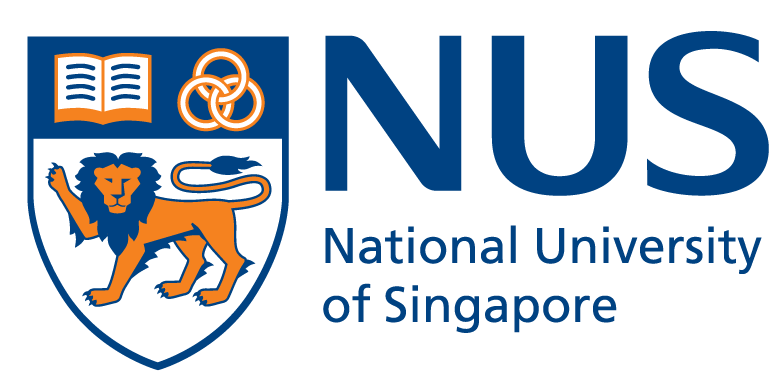Prof Reshma Taneja
ORCID: 0000-0001-6214-6177
Appointment(s)
1/8/2020, Head, National University of Singapore, Department of Physiology, Singapore, Singapore
1/1/2020, Professor, National University of Singapore, Dept of Physiology, SINGAPORE
1/2/2008, Associate Professor, National University of Singapore, Physiology, Singapore, Singapore
1/4/1997, Assistant Professor, Mount Sinai School of Medicine, Developmental and Regenerative Biology, New York, United States
Degree(s)
PhD
Doctor of Philosophy
Master of Science
Bachelor of Science
Biography
Reshma Taneja is Professor and Head of the Department of Physiology at the National University of Singapore. Her research interest is in gene regulation during cellular differentiation using skeletal muscle as a model system. Her laboratory presently focuses on the identifying epigenetic alterations in rhabdomyosarcoma, a paediatric skeletal muscle cancer.
She received a Bachelor’s degree from MG Science College, a Master’s from MS University, a PhD from the Indian Institute of Science in India; and was a post-doctoral fellow in the laboratory of Prof. Pierre Chambon at the IGBMC, in Strasbourg, France. Before relocating to Singapore, she was on the faculty of The Icahn School of Medicine at Mount Sinai in New York.
She has published several papers in high profile journals including Nature Immunology, Nature Communications, PNAS, Genes and Development, EMBO J among others. She is recipient of the Scholar Award from the Leukemia and Lymphoma Society and the Basil O’Connor Award in the USA, as well as several awards for Research Excellence, Teaching Excellence and Mentoring at NUS.
Selected Publications
BRD4 isoforms have distinct roles in tumor progression and metastasis in rhabdomyosarcoma
Das D, Leung JY, Balamurugan S, Tergaonkar V, Loh A, and Taneja R.
Histone variant H3.3 promotes metastasis in alveolar rhabdomyosarcoma
Karthik N, Lee J, Soon J, Chiu HY, Loh A, Ong D, Tam WL, Taneja R.
MCU dependent mitochondrial calcium uptake regulates TGFb signaling and tumor progression in embryonal rhabdomyosarcoma
Chiu HY, Loh A and Taneja R.
EHMT1 promotes tumor progression and maintains stemness by regulating ALDH1A1 expression in alveolar rhabdomyosarcoma
Nachiyappan A, Soon J, Lim HJ, Lee VKM, and Taneja R
Deregulation of the histone H3K9 di-methylation landscape suppresses canonical Wnt signaling in embryonal rhabdomyosarcoma
Pal A, Leung JY, Ang GCK, Rao VK, Pignata L, Lim HJ, Hebrard M, Chang KT, Lee VKM, Guccione E, and Taneja R
Epigenetic Regulation of the PTEN-AKT-RAC1 Axis by G9a Is Critical for Tumor Growth in Alveolar Rhabdomyosarcoma
Bhat AV, Palanichamy Kala M, Rao VK, Pignata L, Lim HJ, Suriyamurthy S, Chang KTE, Lee VK, Guccione E, Taneja R
The basic helix-loop-helix transcription factor SHARP1 is an oncogenic driver in MLL-AF6 acute myelogenous leukemia
Numata A, Kwok HS, Kawasaki A, Li J, Zhou QL, Kerry J, Benoukraf T, Bararia D, Li F, Ballabio E, Tapia M, Deshpande AJ, Welner RS, Delwel R, Yang H, Milne TA, Taneja R*, Tenen DG*
P/CAF mediates PAX3-FOXO1-dependent oncogenesis in alveolar rhabdomyosarcoma
Bharathy N. Suriyamurthy S, Rao Vk, Lim Hj, Chakraborty P, Vasudevan M, Dhamne A, Chang K, Lee V, Kundu T, Taneja R.
G9a promotes proliferation and inhibits cell cycle exit during myogenic differentiation
Rao VK, Ow JR, Shankar SR, Bharathy N, Manikandan J, Wang Y, Taneja R
Lysine methyltransferase G9a methylates the transcription factor MyoD and regulates skeletal muscle differentiation
Ling BMT, Bharathy N, Chung T-K, Kok WK, Li S, Tan YH, Rao VK, Gopinadhan S, Sartorelli V, Walsh MJ, Taneja R
Stra13 regulates oxidative stress mediated skeletal muscle degeneration
Vercherat C, Chung T-K, Yalcin S, Gulbagci N, Gopinadhan S, Ghaffari S, Taneja R
Stra13 regulates satellite cell activation by antagonizing Notch signaling
Sun H, Li L, Vercherat C, Gulbagci NT, Acharjee S, Li J, Chung T-K, Thin TH, Taneja R
Defective T cell activation and autoimmune disorder in Stra13-deficient mice
Sun H, Lu BF, Li RQ, Flavell RA, Taneja R
Stra13 expression is associated with growth arrest and represses transcription through histone deacetylase (HDAC)-dependent and HDAC-independent mechanisms
Sun H, Taneja R

